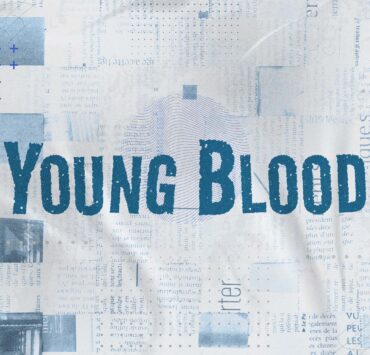This art student crocheted the country’s underwater patrimony

Growing up, Erika Isleta often went with her grandparents and family to the beach, where she snorkeled with cousins and got to enjoy the marine life, developing a keen awareness of the oceans.
Some years later, her grandfather, Albert del Rosario, an accomplished businessman, would become ambassador to the United States, and would serve as then-President Benigno Aquino III’s foreign secretary between 2011 and 2016.
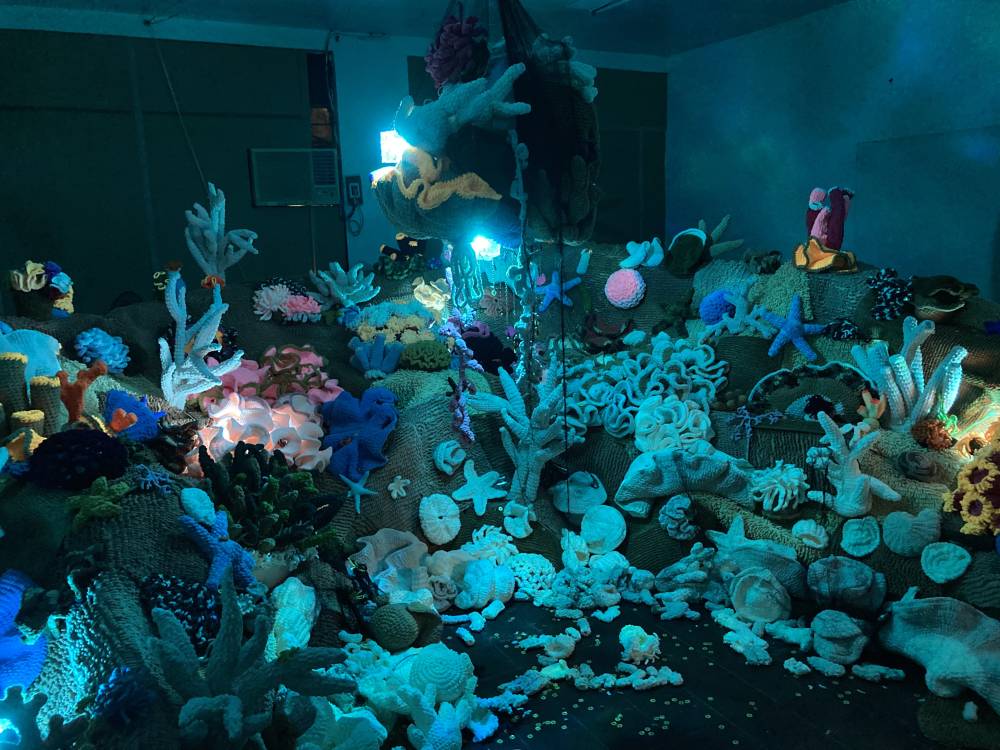
In those years, Del Rosario stood at the forefront against China’s incursion into Philippine waters. During his tenure as secretary, a tense standoff between the Philippines and China happened in Panatag (Scarborough) Shoal, some 240 kilometers west of Luzon. Del Rosario also fearlessly slapped two legal cases against Beijing, and in 2016, the Arbitral Tribunal in the Hague invalidated China’s “nine-dash” claim, in reference to several dashes on the map allegedly marking their territory. The ruling also noted that China had caused great harm to the marine environment and had broken the law under the United Nations Convention on the Law of the Sea.
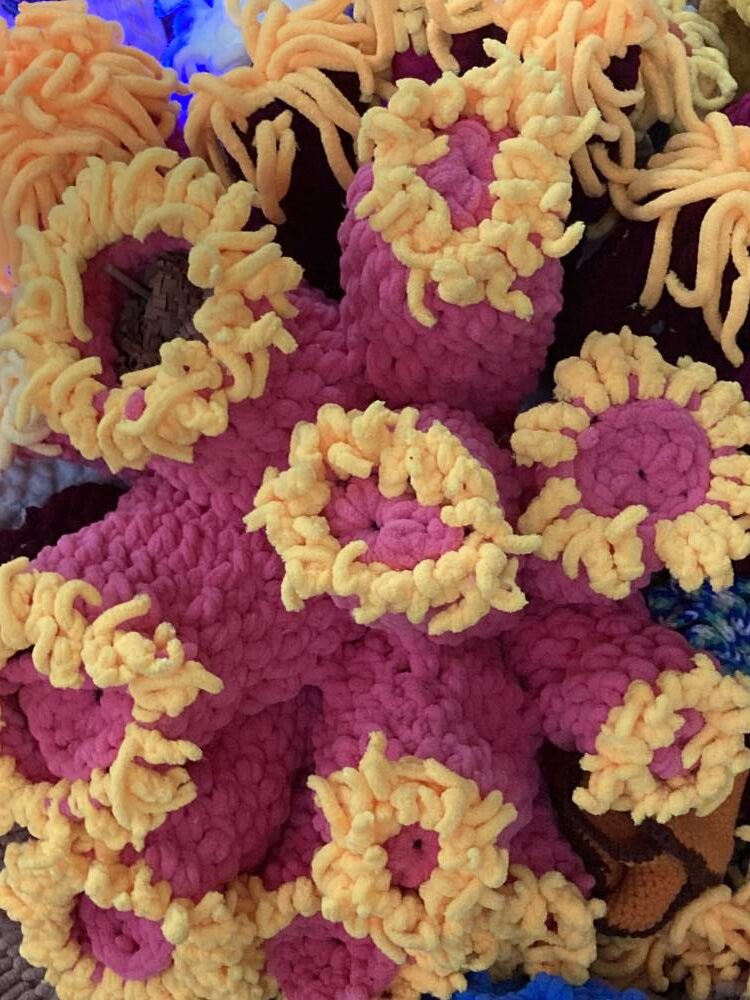
Erika remembers how in 2019, her grandfather had been held and detained in Hong Kong for four hours, only to be sent home, with no reason given—but obviously, because he had been declared persona non grata by China. Del Rosario died on April 18, 2023 at the age of 83.
A Fine Arts student at the University of the Philippines who’s set to graduate this year, Erika, 24, found herself inspired by these events involving her grandfather, who, she recalls, taught her many lessons on hard work and integrity. For an earlier school project, she had already produced a series of paintings on the subject, featuring the nine-dash line and several metal boats she stuck on the frame, as well as a dragon.
“I was getting so many cuts, I needed a tetanus shot,” she says with a laugh.
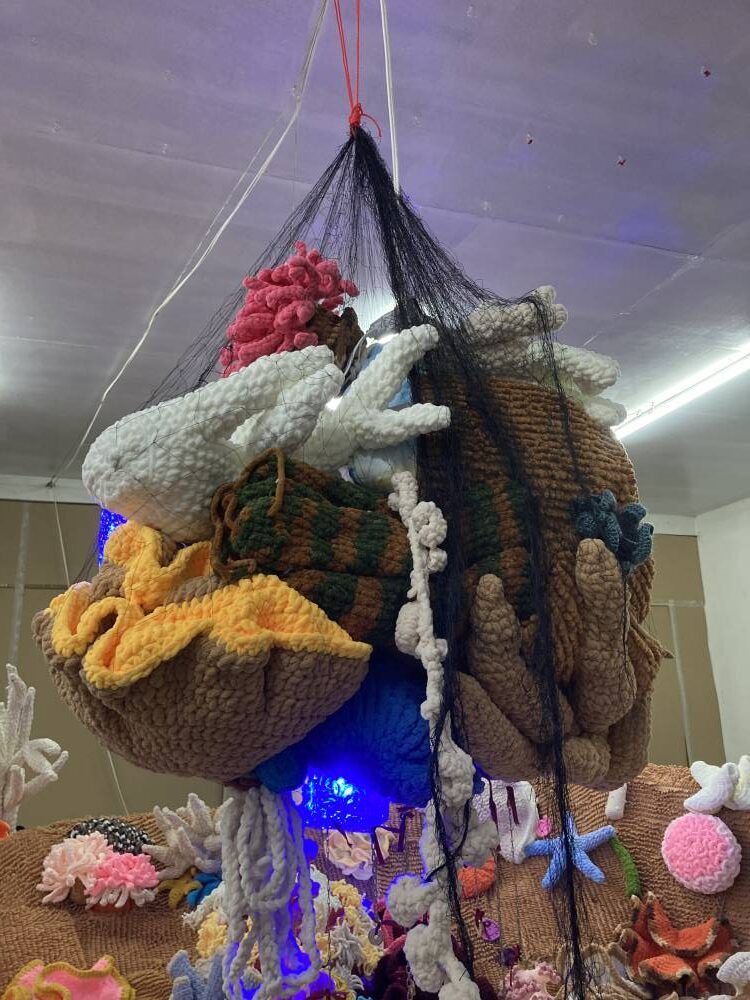
Details
For her undergraduate thesis, as students were asked to create something both personal and universally relevant, Erika again zoomed in on the West Philippine Sea, and how her grandfather explained the issue to them.
Until last June 21, she filled Room B11 at the University of the Philippines’ (UP) Bartlett Hall with her work, “The Grim Reefer,” an installation using chicken wire, wooden posts, ambient sounds, beautiful lights, and her main medium—a colorful, painstakingly creative collection of crocheted corals arranged in a 12-foot arch, and littered with delightful details, despite, as the title suggests, the grim subject.
“The most talked-about aspect of the West Philippine Sea was the harassment of the fishermen above water,” Erika says. “I wanted to focus more on what’s under the sea because it’s less talked about. People know it, but it’s overlooked because we don’t see it.”
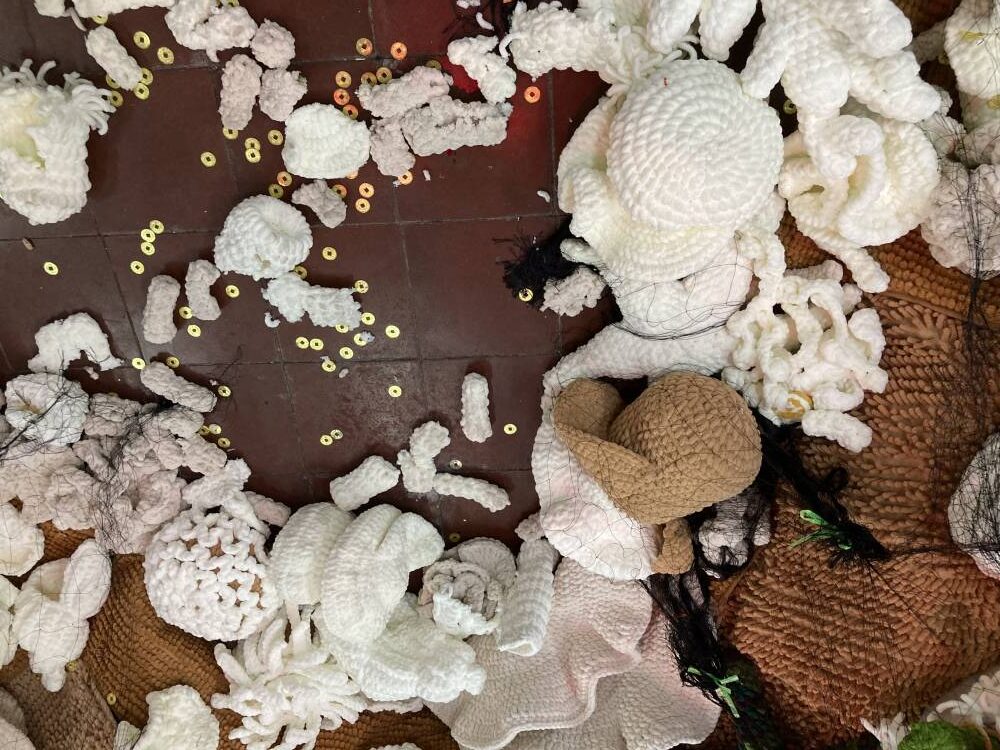
Strangely enough, Erika’s first professor did not believe the project was personal enough. When she finally got the go-signal from a new professor to do the project, she realized that she would not be able to make all the elements herself in several months, despite having learned to crochet two years ago.
“At first, I was doing it on my own for a few months. The pointed ones, the staghorn corals, I would make each horn, and then I would sew it all together. My hand was getting so strained already.”
With help from her parents and aunts, Erika sent out a call for volunteers willing to help, and who actually supported her advocacy. Erika sent them the yarn and shouldered the cost of shipping. “I actually had 18 people help me, and that really saved me!”
With several items in her hands, Erika was able to set up an installation that was a microcosm of the reefs. As part of her research, she cites an alleged incident in 2023 when the Philippine Coast Guard was patrolling the West Philippine Sea and spotted a Chinese vessel pulling away. “When they sent divers underwater, they saw that the reefs had been destroyed, and this had been happening for a while.”
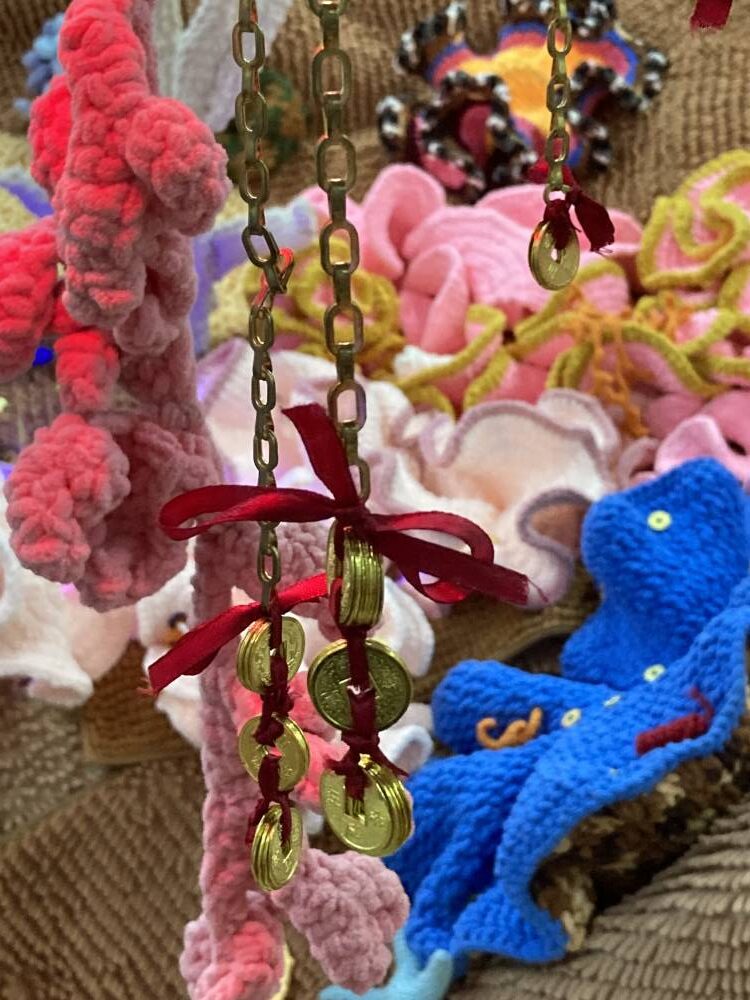
She also learned that the Chinese had been harvesting giant clams, whose white inner shell was being used as a substitute for the elephant ivory now banned in their country. “Aside from the harvesting, the reefs were also being destroyed because of the expansion of their islands to acquire more territory. They actually build on top of the reefs.”
Centerpiece
Thus did Erika set up her work, which uses colored yarn to form staghorn and lettuce corals, zoanthids, and more. A bright blue starfish sits on one side, and staghorns line the top of the “reef.” Toward the center, bleached and broken corals in off-white are scattered on the floor, with Chinese coins and black fishing nets thrown among them; a lone tiny clownfish—the only fish in the installation, Erika notes—hides in its bleached anemone. (Bleaching happens to corals when temperatures rise, and the color-giving algae in the corals is expelled, leaving the organisms white and, in most cases, dying.)
The centerpiece statement hangs from the ceiling above the installation: A net has scooped up dozens of corals and even a clam, a literal representation of the theft of the Philippines’ natural resources, not to mention the destruction of the marine environment.
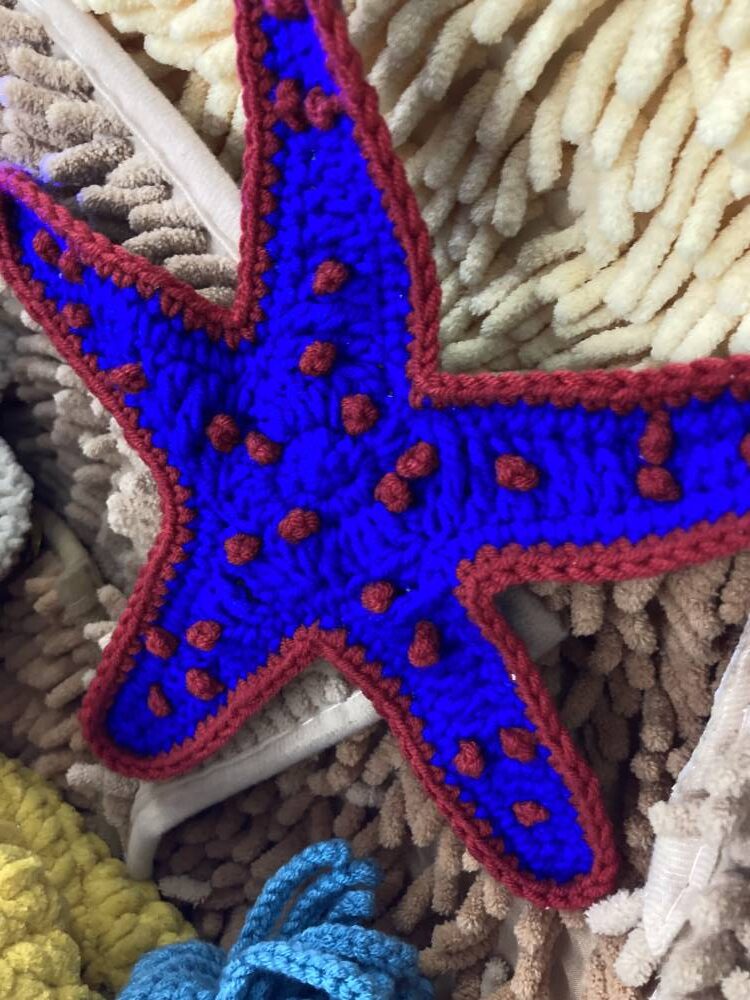
It’s already interesting seeing the installation in bright light. But when the overhead lights are extinguished, the room changes color, and the sound of waves fills the room, the experience becomes even more immersive. And to think that Erika only wanted to learn to crochet to make clothes!
One of her thesis panelists did ask Erika if she hated the Chinese. “My whole friend group, they’re all Chinese,” she says with a laugh. “Almost everything we use is made in China. I’m not into boycotting the people; the workers who make things are just trying to make a living. They’re just like everyone else. It’s their government that is power-tripping.”
For safety, and in solidarity with her grandfather, Erika and her family have not traveled to Hong Kong or China since Del Rosario’s 2019 incident.
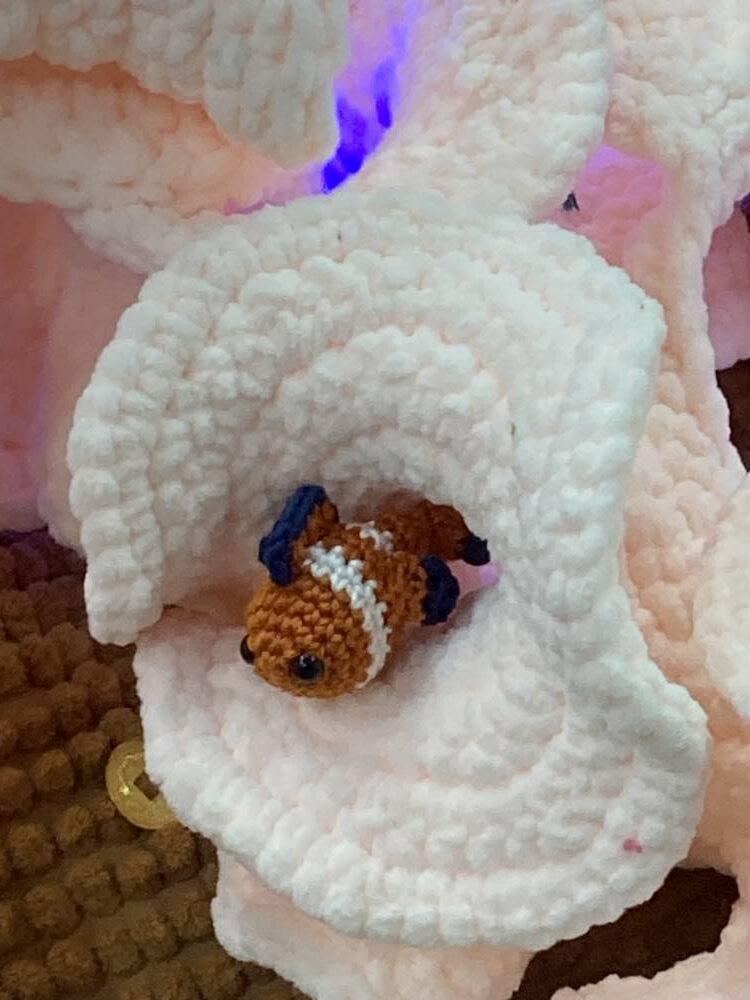
Although the UP exhibit has ended, there’s a big chance “The Grim Reefer” will be transferred to a new venue, especially if her grandfather’s one-time colleagues in the Department of Foreign Affairs can help it. After all, it’s not just about some marine life; it’s a matter of national patrimony.
Erika Isleta’s exhibit notes say it all: “With a collective effort to create coral through crochet, this installation also represents the interconnection between nature and our people, reminding us how our human conflicts affect our natural resources. ‘The Grim Reefer’ is a reminder that what we have at the bottom of our seas is worth fighting for, and to not let anyone bully us into giving up what is rightfully ours. Atin ‘to.”














